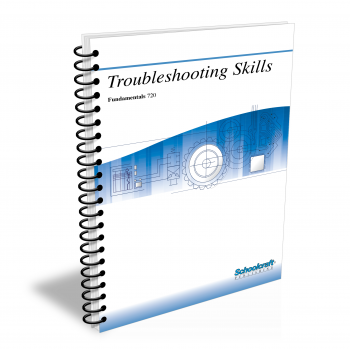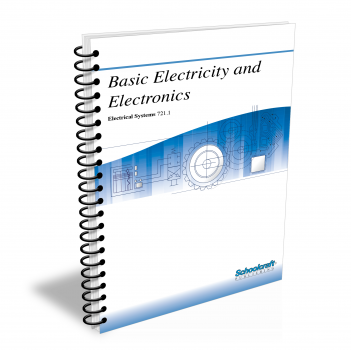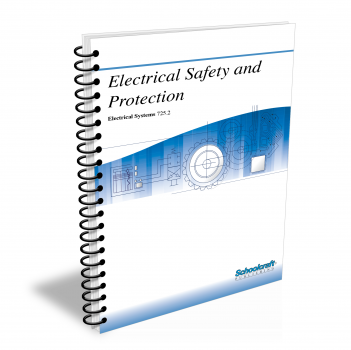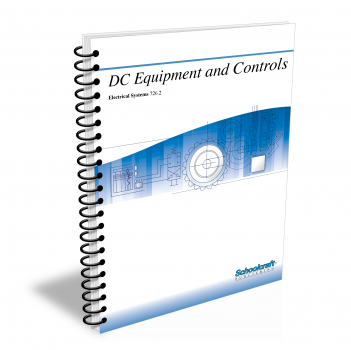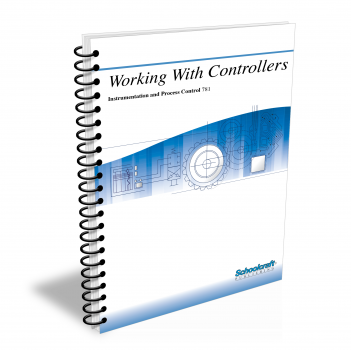Control Systems
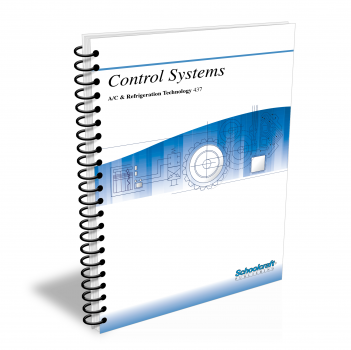
Course Number: 437
The Control Systems textbook introduces the need for control and control methods, including information on self-powered, pneumatic, hydraulic, electric, and electronic systems. It covers various sensors and controlled devices, the basics of two-position, floating, and proportional control systems and their maintenance and troubleshooting, and the various processes requiring control in a refrigeration or air-conditioning system.
Does your curriculum require additional topics not included in this textbook? Build a customized version of the Control Systems textbook below.
Recommended Contact Hours – 10
Preview a Chapter
Available Supporting Material
- Table of Contents
- My Custom Book
- Exam Copies
- Suggested Titles
Table of Contents
Chapter 1: Introduction to Control Systems
Topics: Automatic control; Control system basics; Two-position, floating, and proportional control; Open- and closed-loop control; Operating power
Learning Objectives:
- Explain why control systems are needed and name devices used to control environmental conditions.
- Define the terms used to describe control systems-controlled variable, controller, controlled device, setpoint, control point, and controlled medium-and name the basic elements of a control system.
- Describe the action of two-position, floating, and proportional control.
- Explain how anticipators work.
- Compare open-loop and closed-loop control.
- Compare the basic requirements of pneumatic/hydraulic control systems to those of electric/electronic control systems.
Chapter 2: Sensors and Controlled Devices
Topics: Temperature, humidity, and pressure sensors; Dampers; Valves; Variable-speed drives
Learning Objectives:
- Explain the need for a sensor in a control system.
- Name and explain the operation of three kinds of temperature sensors.
- Define relative humidity, state the range required for human comfort, and describe common humidity sensors.
- Name three common pressure sensors and explain their operation.
- Explain the operation of two-position dampers and valves in shutoff and throttling applications.
- List the advantages of variable-speed drives over older methods of speed control.
Chapter 3: Automatic Control Systems
Topics: Two-position, floating, and proportional electric control; Pneumatic systems, controllers, actuators, relays, and switches; Electronic systems; Proportional band, gain, and PID control
Learning Objectives:
- Describe the operation of two-position, floating, and proportional electric controllers.
- List the equipment needed for a pneumatic control system.
- Name several pneumatic relays and switches, and explain why each is used.
- Discuss the advantages and basic operation of electronic controls.
- Define resolution, sensitivity, proportional band, and gain, and explain how they are related.
- Distinguish between integral and derivative action, and explain how each can improve system performance.
Chapter 4: Control of Refrigeration and Air-Conditioning Processes
Topics: Primary control; Low-pressure, high-pressure, and high-temperature controls; Anti-recycle timers; Pressure regulators; Oil-level controls; Overload protection; Capacity control
Learning Objectives:
- Explain how pumpdown control operates and why pumpdown is often preferred over other methods of primary control.
- Describe the location, function, and operation of a high-pressure control.
- Name three ways to control condenser pressure and at least three ways to control system capacity.
- Explain how a differential oil pressure safety control works.
- Compare the two methods of modulating the flow of water to hydronic terminals.
Chapter 5: Maintaining and Troubleshooting Controls
Topics: Maintaining pressure controls, thermostats, switches, valves, timers, controllers, relays, and power supplies; Troubleshooting the system
Learning Objectives:
- List the four basic steps involved in setting up a PM program.
- Explain the importance of high-pressure controls as safety devices and explain their testing procedures.
- Explain how oil pressure is maintained in various kinds of compressors.
- Describe the testing and maintenance required for condenser water regulating valves and compressor capacity controls.
- Explain how to check for oil and water contamination in control air and what measures to take to minimize them.
- Explain the major maintenance requirements of a pneumatic control system.
- Describe the maintenance required by electric and electronic controllers.
- Explain how to use a troubleshooting chart.
Add Chapters to Your Custom Book
Select Chapter(s):
- Chapter 1: Introduction to Control Systems
- Chapter 2: Sensors and Controlled Devices
- Chapter 3: Automatic Control Systems
- Chapter 4: Control of Refrigeration and Air-Conditioning Processes
- Chapter 5: Maintaining and Troubleshooting Controls
My Custom Book
Create a custom book that contains only the training content that your students need to succeed
Our topics cover a broad and diverse spectrum of subject matter, from reading blueprints to electrical schematics, measurement to rigging and safety, material handling to welding, and everything in between! Choose only the lessons that meet your specific curriculum requirements.
Request Exam Copies
Exam Copies
Ready to see a copy of our textbooks? After selecting which textbooks you’d like to review for your course, you can submit your request by either logging in or creating an account so we know where to ship your exam copies. A representative from Schoolcraft will contact you to confirm and finish processing your request.
Exam copies are always free and yours to keep.
Selected Exam Copies
none selected
* Maximum of five copies can be ordered
